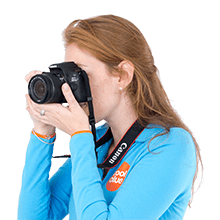7 tips for recording with a 360-degree camera
1. Record at eye level
If you record at eye level, you create a realistic image. When the viewer watches your video, it'll feel like they're at the destination themselves.
3. Use a monopod
When you use a tripod, there's a good chance that you'll see the legs in the video. That'd be a shame. Make sure you use a monopod, as you're less likely to see these on your videos.
3. Hide if you don't want to be in the video
Because the image is 360 degrees, you'll be in the video one way or another when you hold the camera yourself. If you don't want this, be creative. Put the camera down somewhere and then hide behind a tree, car, or wall.
4. Record clear audio separately
Almost all 360-degree cameras record audio, but these usually aren't great. How to solve this? Easy. Record your audio separately with a microphone or phone and add it to the video later when you're editing.
5. Keep the stitch in mind
Many people forget that with 360-degree cameras with 2 lenses, you'll always encounter a so-called stitch line. When you record a person or subject, put it right in front of a lens instead of in between the 2 lenses. If you don't do this, the subject is pulled from its context which leads to distortion.
6. Record in situations with sufficient light around the camera
With most 360-degree cameras, noise occurs when you record in the dark or in low-light situations. Due to the low maximum ISO value, the chance of noise is high. You can prevent noise by filming in sufficient light.
7. Ensure the area around the camera is completely free
Take the surroundings into account when you record from 1 point. Make sure the area around the camera is completely clear. For example, don't place the camera close to a wall. Half of the images (180 degrees) are then filled with wall and that's not enjoyable to look at.


